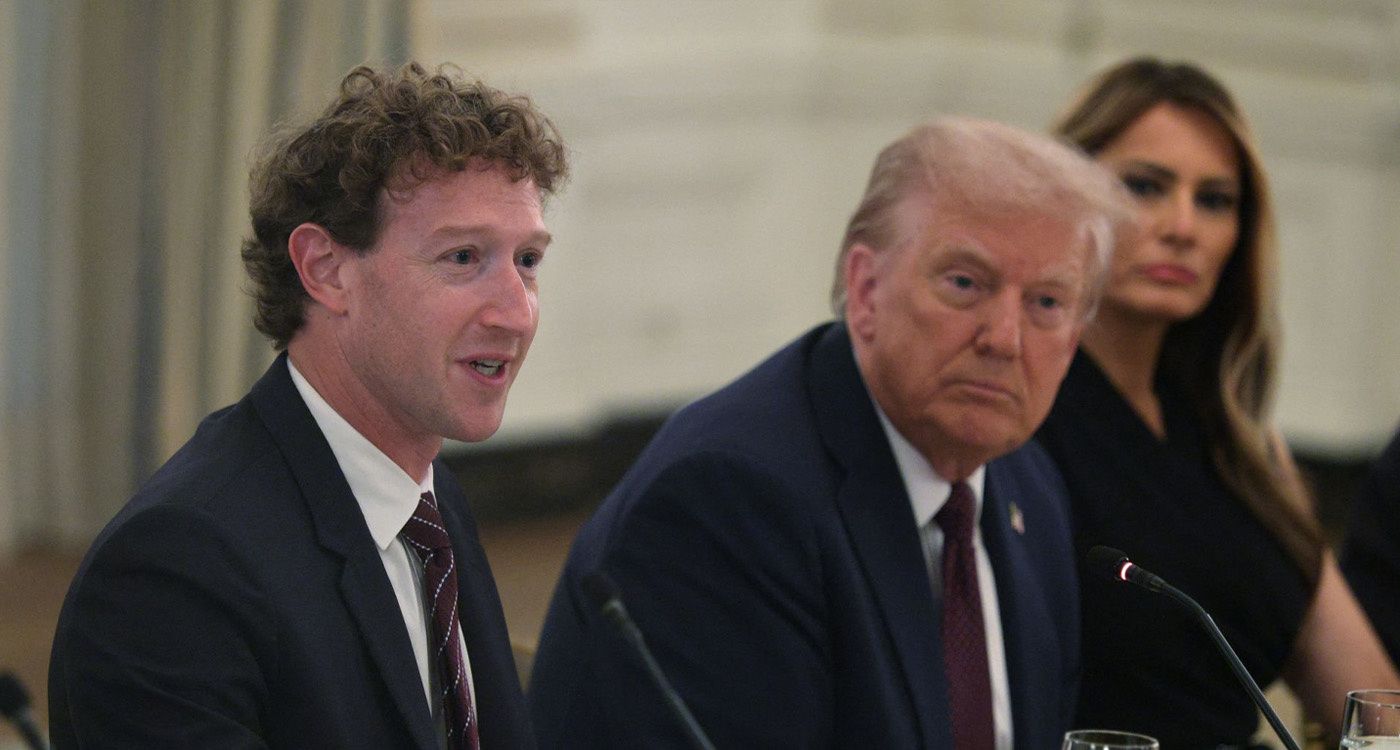- Home
- Highlights
- Trump and Artificial Intelligence: Reclaiming America’s Lead

Mark Zuckerberg speaking before Donald and Melania Trump at a White House dinner on September 4, 2025. ©ALEX WONG / GETTY IMAGES NORTH AMERICA / Getty Images via AFP
In January 2025, barely back in the White House, Donald Trump set the tone: artificial intelligence would not be merely a technological challenge but a strategic instrument to secure American supremacy.
The Executive Order 14179, Removing Barriers to American Leadership in Artificial Intelligence, marked a turning point. Regulatory constraints from the Biden era were swept aside. Innovation moved forward at full speed, competitiveness surged, and the administration pursued a single, clear, and unequivocal goal: to make the United States the undisputed leader in AI.
A Forward-Thinking Offensive
A few months later, in July 2025, the White House unveiled America’s AI Action Plan. Three pillars, one clear objective: outpace and outmaneuver the country’s rivals, beginning with Xi Jinping’s China.
-
Fuel innovation through massive investments in research, from the lab to the field.
-
Build strategic infrastructure: data centers, semiconductor production, and supercomputers.
-
Secure global leadership by exporting American technologies to allies while curbing China’s advance.
America must lead, not follow. This is Trump’s vision, making AI the cornerstone of his economic and industrial policy.
Fewer Rules, Faster Growth
Under this plan, every day counts. Procedures are streamlined, environmental rules eased, and public-private partnerships strengthened. The military, federal agencies, and Silicon Valley giants work hand in hand to integrate AI across defense, cybersecurity, and government operations.
Critics may question the approach’s boldness, but its results are undeniable: capital pours in, projects expand rapidly, and the United States exudes renewed confidence on the global stage.
Neutrality Over Ideology
Trump’s goal is not just to accelerate AI development; he also seeks to shield it from ideological overreach. Through the Preventing Woke AI in the Federal Government executive order, he mandates that systems used by the government remain “neutral.” The aim is to prevent technology from becoming a tool for woke activism and to ensure AI serves everyone, free from cultural biases embedded in the systems.
For his supporters, it is a common-sense decision: AI must remain a tool of national power, not a stage for ideological experiments.
Billions to Build the Future
The investment announcements are staggering. Meta has pledged up to $600 billion by 2028. Apple is committing $100 billion to relocate its technological capabilities. The Stargate project, bringing together OpenAI, SoftBank, Oracle, and MGX, aims for $500 billion to create a global AI powerhouse.
These figures, unprecedented in tech history, confirm that America has reclaimed its position as the epicenter of innovation. Behind the boom, one thing is clear: Trump has successfully united the tech giants around a single, ambitious goal.
A President Caught Between Enthusiasm and Caution
Trump is no fool. At a conference in early September, he quipped about a viral rumor: “If something really serious happens, just blame AI.” This hint of humor conceals real caution: the president knows this technology fascinates as much as it unsettles.
This dual approach has become his hallmark: driving innovation forward while maintaining a degree of public wariness, positioning himself as the ultimate arbiter of AI’s “proper use.”
America in the Lead
Under Trump, artificial intelligence becomes far more than a technological tool: it is a symbol of America’s revival. Through deregulation, massive capital mobilization, and a clearly defined vision, he aims to reposition the United States as the undisputed leader in the global AI race.
Critics abound, but the message is clear: America is moving forward—fast and strong. And if AI truly is “the new power weapon,” Trump can claim he has put his country back at the forefront.


Comments